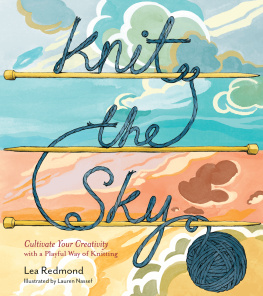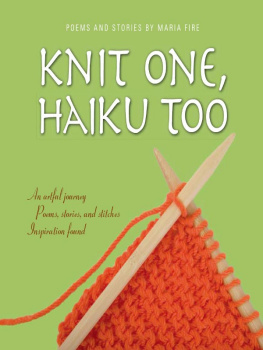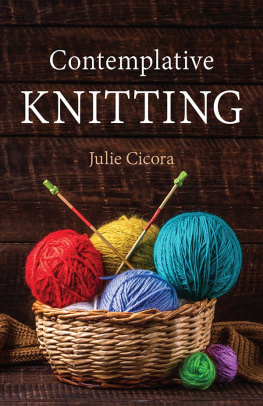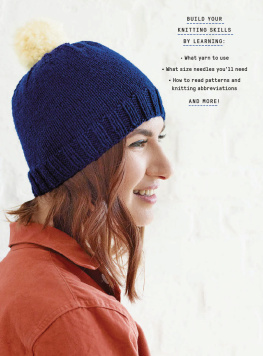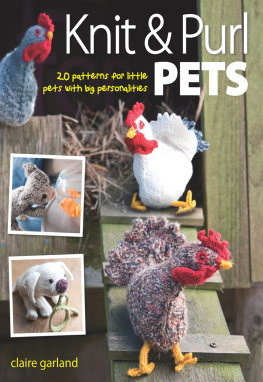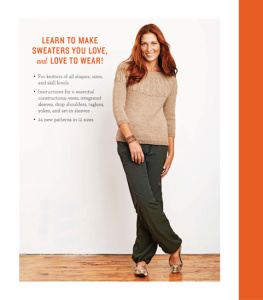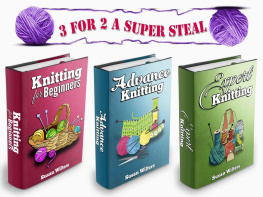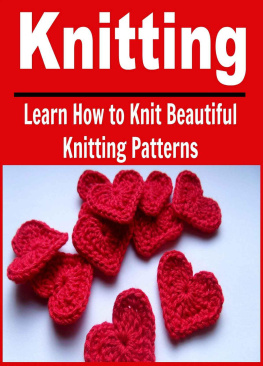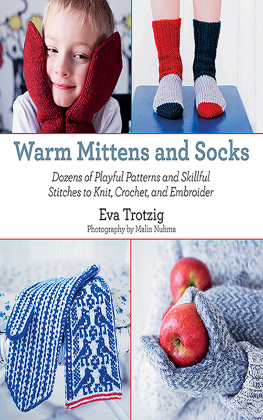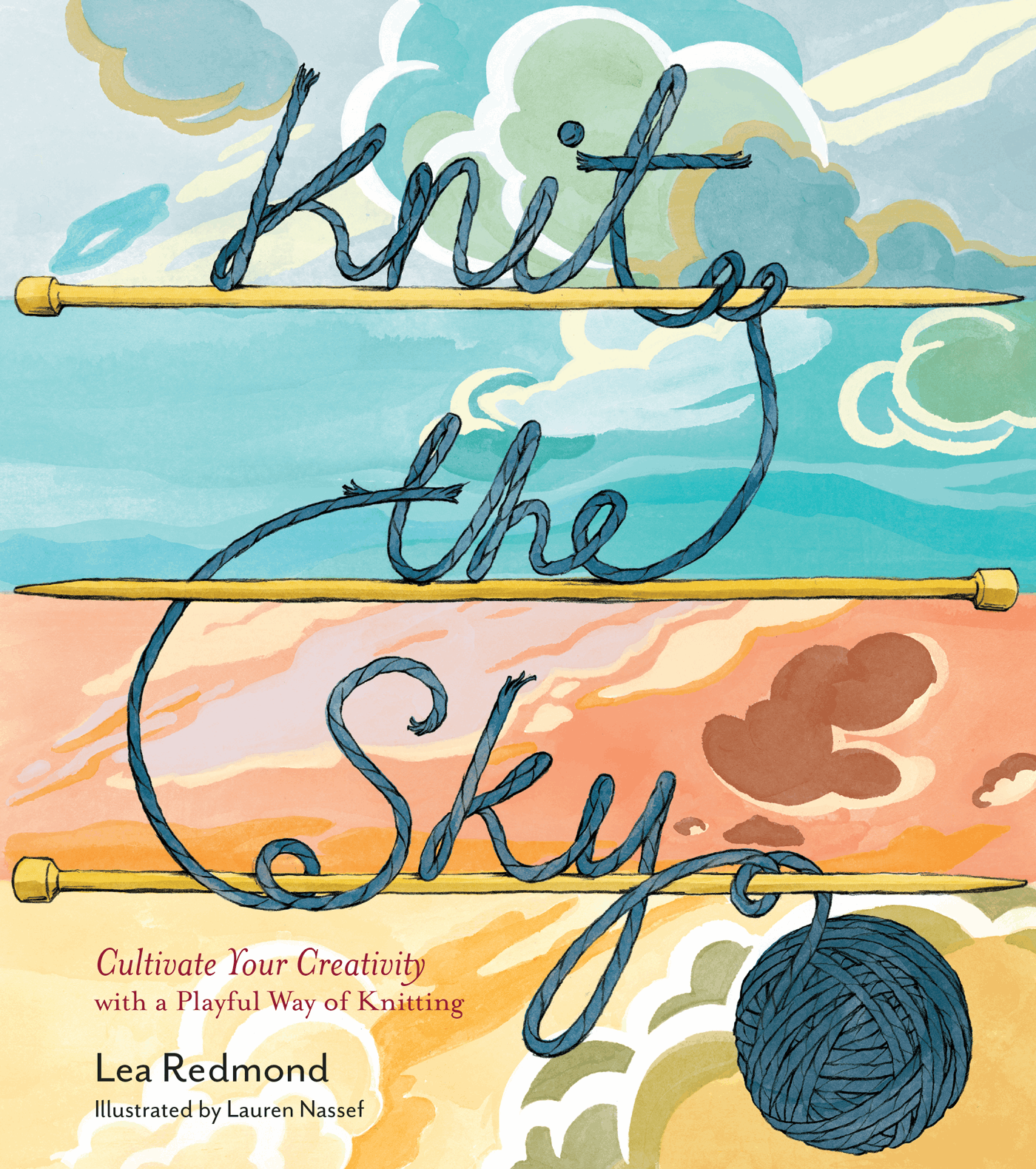Contents
Youre Invited
Imagine yourself strolling through a park. It is a lovely day, so you kick off your shoes and lie down in the green grass. Folding your arms behind your head, you cloud-gaze for a few minutes a whale, a harp, a pie. You drift off into a light sleep. The next thing you know, you awake to a raindrop on your cheek. A pack of gray clouds has blown in from the west, and it is starting to sprinkle. You lie on the ground for just a minute more because a gorgeous sliver of sunshine is slipping through the clouds. Then you hop up and run for cover, perhaps to the caf across the street where you can sit by the window with a cup of hot chocolate.
What if we could turn an experience like this into a knitting project, translating that snippet of beauty into little loops of yarn? What if we could knit the sky? I often wish I could just reach up into the sky and pull some clouds down into my yarn basket! Ill have to do the next best thing: go to the yarn store and collect skeins in a spectrum of sky colors blues, grays, and white. Then Ill return to my window and knit with the strands that best match that days weather. And tomorrow, repeat. Each day will be a chance to pause, look up, and notice the ever-present swirling show above our heads. If I keep at it for 365 days, I will make a one-year weather report in the shape of a scarf!
This book chronicles the many knitting adventures that arose as I began to knit the sky. The projects that follow are knitting patterns, but with a twist. Think of them more like dance partners. As you engage them, they will respond to you, ask things of you, and surprise you. To complete these knitting projects, you will need to look up from your needles and bring your attention to the world around you. You will draw on your own sense of whimsy and adventure as you infuse your knitting with your life, and vice versa. One project requires that you wake up before dawn. Another asks you to see like a bee. Yet another recalls the delight of splitting a twin-stick Popsicle with a friend. We will seek the marvelous in the mundane as we knit on the subway, watch a baseball game, or skip through piles of leaves. Along the way, we will make things, but we will also make memories. We might even make new friends. Please join me!
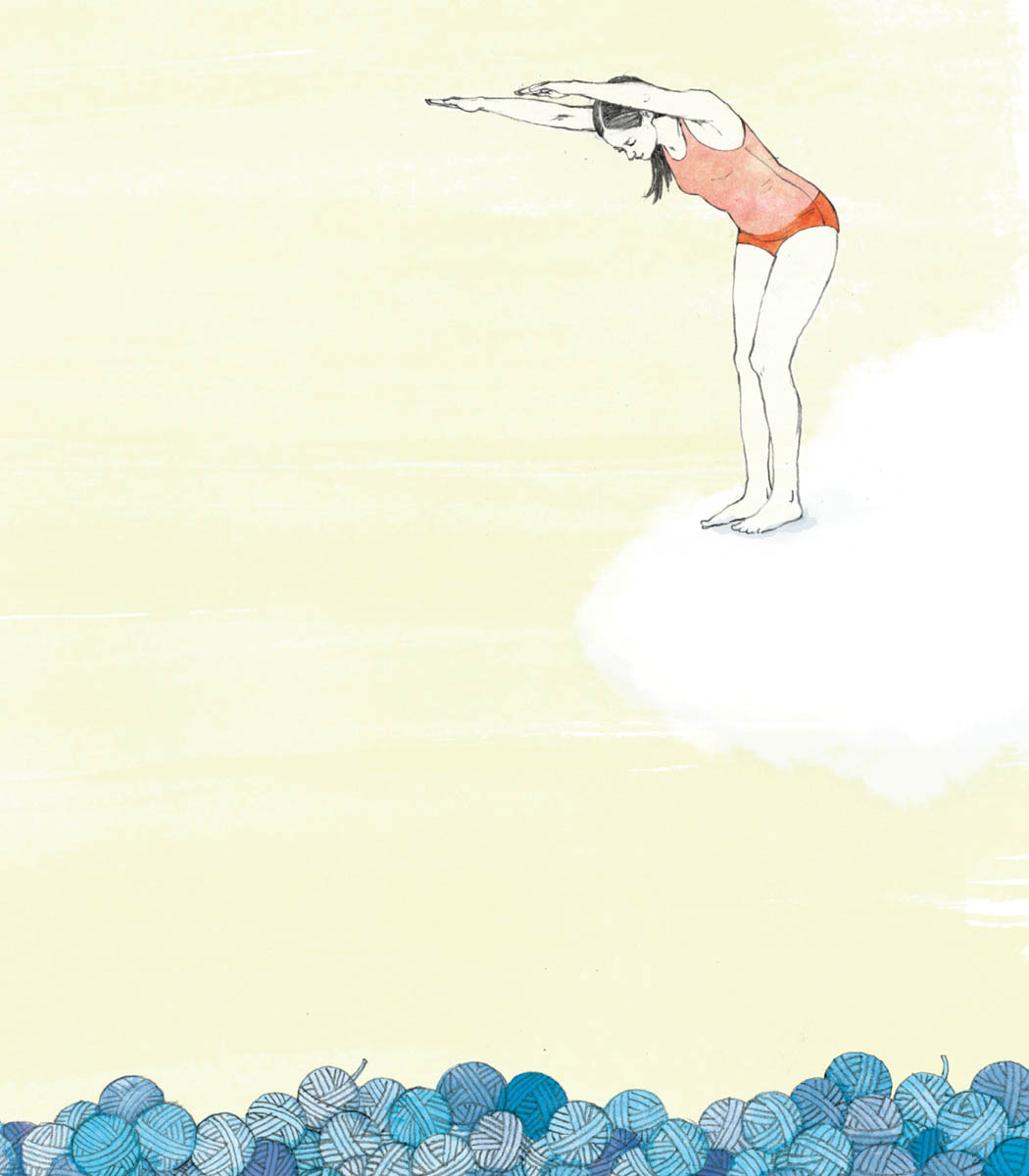
This book is a proposal to knitters everywhere, beginners and experts alike. I would like to suggest that we knitters expand the territory of what we consider to be a pattern. It is commonly thought that the pattern begins with casting on and ends with weaving in loose ends. Everything we need to know is there in ink on paper. There is a photo so we can know that were on the right track. And this is a perfectly wonderful way to knit. I humbly bow to any sweater hand-stitched with love. Similarly, I stand in awe of the many stunning garments knitters are making that exhibit technical mastery. If you are reading this book, you likely know the extreme pleasure of gifting something as simple as a handknit hat. These pleasures are at the heart of this book. They are the starting point, the seed, the enduring core. I just want to be sure that one way to knit browsing, choosing, and following predesigned patterns isnt mistaken for the one and only way to knit. Our craft is much bigger than that. It always has been. It is true: stories and meaning have always infused handknit items, such as the joy that permeates any baby blanket, or the memory your very first project carries of the person who taught you to knit. The power of these stories and experiences is part of what keeps us coming back to our needles again and again. In this book, I would like to draw attention to the already storied nature of knitting and to explore ways to creatively engage that phenomenon in a way that deepens our humanity, both as individuals and as social creatures.
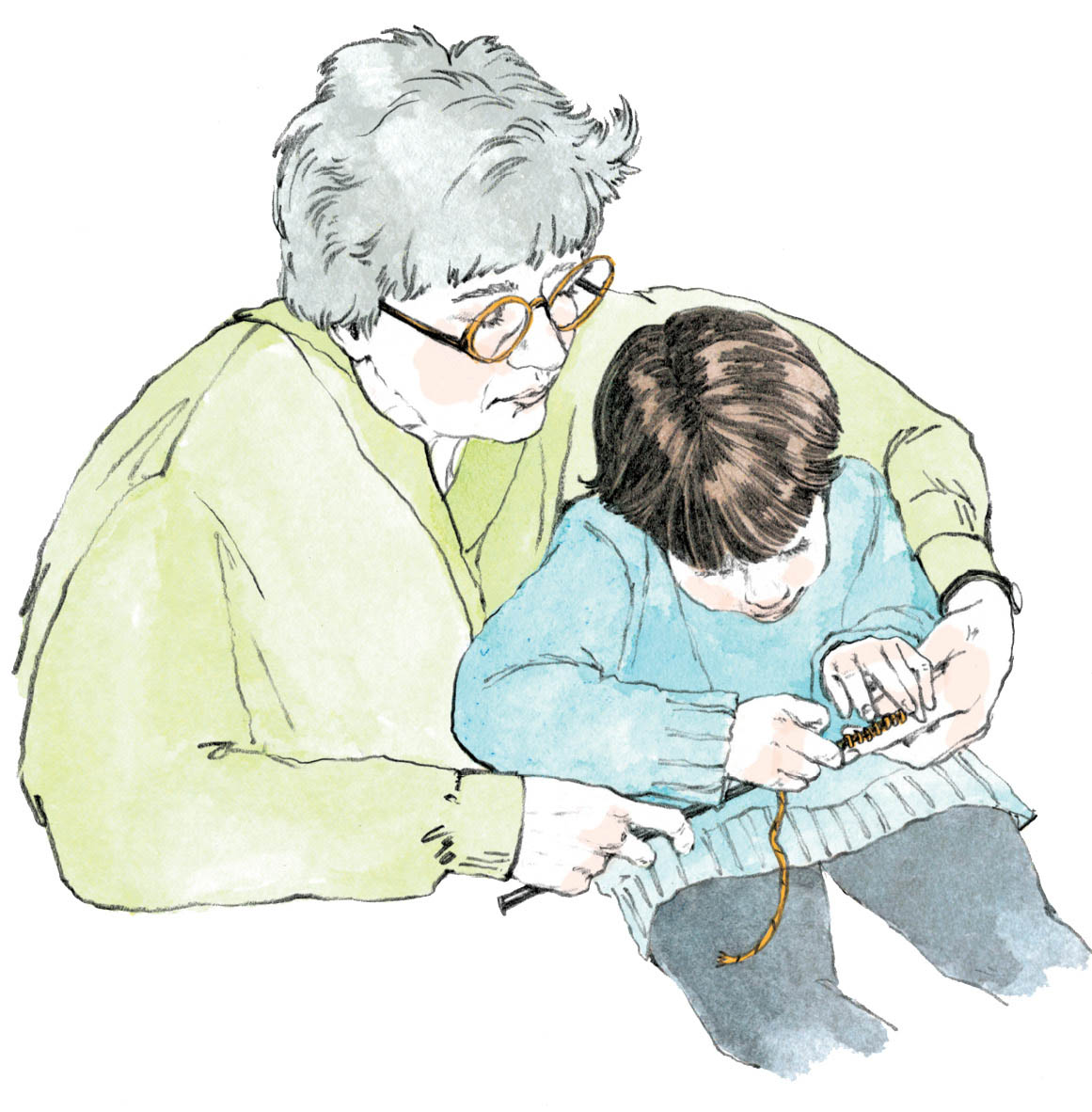
Making in this way means giving as much weight to process as to product. Or, put another way, it means expanding our notion of product to include all of the hidden elements wrapped up in the making of a thing. From this perspective, we are never just making a hat or a pair of socks; we are always also making a world, our own little world as well as the bigger common world. If we do not focus only on the finished garment, we can stand back and take a wider view. Did you laugh in the middle of a row? Did you run into an old friend on your way to the yarn shop? Did your sister shed a few tears when she received the baby blanket? This world of experience, this field of relations, is what we truly make when we knit. So if we consider the full life of a garment, from the gathering of yarn to the knitting to the way the garment is eventually worn, every step along the way becomes an opportunity for creative play. Each seemingly ephemeral moment is an opportunity to be radically thoughtful and make things count. Since, as it turns out, we are making a whole world, we might as well make it as wonderful as we can.
To be clear, I do not value process over aesthetic results; the garments we make should absolutely be beautiful and aesthetically interesting soft, elegant, warm, patterned. Rather, I want to propose that an essential part of any items beauty is the activity and meaning it gathers, the weighty wonderfulness that comes with being connected in a broader field. I want to integrate process and product, letting life moments past, present, and future find its way into the aesthetic itself, influencing what the finished garment looks like, its colors, textures, shapes. I wish to see garments that embody meaning and tell stories in ways both explicit and implicit. I dream of garments in which the aesthetic qualities are not just objectively beautiful for formal reasons, but also beautiful because they were thoughtfully chosen for particular reasons by particular people who brought the full force of their hearts and minds to the task.
And the party isnt over at bind off. With the expanded notion of making that I like to assume, a garment is never truly done. Yes, we will weave in all the loose ends and make sure it fits, but there is more. The handknit results of the patterns in this book are not only records of past processes. They are not mere silent artifacts left over from adventures come and gone. Quite the contrary. As these items are put to good use, they will take on new lives of their own, continuing to remind, inspire, and connect us with the people, places, and ideas we care about. All those future possibilities are part of what the garment is, and what it can be. Despite how all this might sound, this way of knitting this way of being need not be overly complicated. It certainly is not abstract. Just like dancing, the best way to learn the steps is to do them and develop intuition for them. So, welcome!

